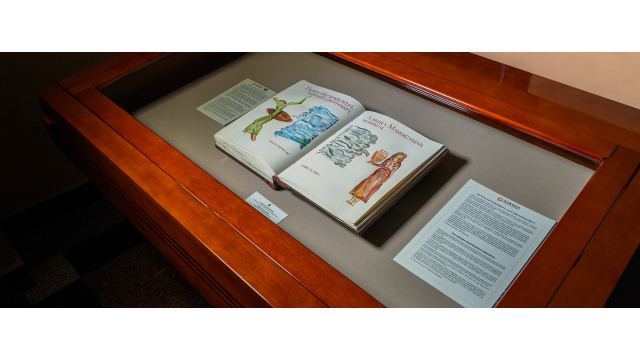“The history of the Matenadaran, named after Mesrop Mashtots, reflects the legacy of noble human deeds. Just think of people like Hovhannes Husyan Vardapet who, besides preserving thousands of manuscripts, saved many lives during the Armenian Genocide. In this context, the Matenadaran could be seen as an institution representing humanitarian values,” said Ara Khzmalyan, Director of the Matenadaran. “It is no coincidence that the Aurora Humanitarian Initiative, this exceptional project, has chosen the Matenadaran as its main partner from the very beginning. The Chronicles of Aurora manuscript is also a reflection of our shared goals and involves young people as active participants. By engaging creatively with stories that exemplify human values and learning about individuals capable of heroic actions, they interact with model global citizens and develop a distinct moral code, whether consciously or not. We are delighted with the successful conclusion of this project and grateful to the Aurora Humanitarian Initiative for nearly a decade of fruitful cooperation.”
The Chronicles of Aurora is the first manuscript crafted in the Matenadaran in the 21st century in accordance with the ancient Armenian traditions. It presents the history of the Aurora Humanitarian Initiative, highlighting the humanitarian efforts of the Aurora Prize Laureates and Humanitarians. The manuscript portrays stories of inspiring humanity, selflessness, and remarkable courage through unique illustrations. The title pages for seven Aurora Prize Laureates, as well as the final one dedicated to the memorial honoring Aurora Mardiganian, are illustrated by children studying at the Art of Flowering miniature studio at the Matenadaran.
“Founded on behalf of the survivors of the Armenian Genocide and in gratitude to their saviors, the Aurora Humanitarian Initiative, over its eight years of activities, has become a distinctive beacon of humanity, positively impacting the lives of more than three million people worldwide. This manuscript, created at Yerevan's Matenadaran, reflects the humanitarian mission of the Initiative and serves as evidence of the ongoing history and connection across generations. It's significant that these eight years of Aurora's work, summarized in the manuscript, conclude with the inscription about the sculpture dedicated to Aurora Mardiganian as a symbol of resilience of an entire nation and timeless universal values,” said Marine Ales, Chair of the Creative Council of the Aurora Humanitarian Initiative. “Aurora Mardiganian, whose remains are buried in a Californian cemetery, is a symbol of courage and revival for us. It is important that, in the end, there is a place dedicated to her in Armenia and her memorial stands here as a sign of our boundless gratitude.”
The gratitude memorial sculpture honoring Aurora Mardiganian will symbolize her journey from surviving the Genocide to salvation. The back part of the sculpture will depict women on their escape route, with Aurora among them. In the front part of the memorial, Mardiganian herself will stand separate from the other women, symbolizing her survival and enlightenment.
“Inspired by the courageous story of this Armenian woman, I felt privileged to create a memorial in her honor. This sculpture is not just a reflection of one individual’s story; it is also an embodiment of each Armenian who went through hell during the Armenian Genocide,” noted Vigen Avetis, the artist who created the memorial. “As I worked on it, I aimed to capture the fragility of that woman and the entirety of world history within the sculpture. The memorial embodies duality, both in a literal and metaphorical sense. On one side, we witness Aurora amidst the harrowing trials endured by her and the Armenian people, while on the other side, we see the light of salvation. Ultimately, Aurora's story is one of hope as she survived despite everything she went through.”





